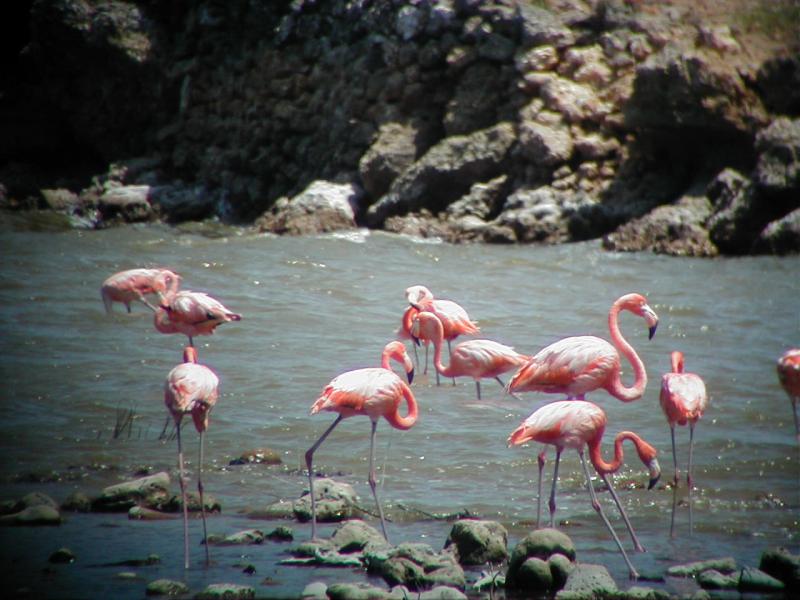We just returned from a trip to the country of Aruba, a small island about 15 miles long and 7 miles wide located only a few miles farther out from the coast of Venezuela as our own Matinicus Island is from our mainland. Fall migrant birds that recently nested up here in the North and were headed to South America for the winter were in much evidence, with hundreds of barn swallows swirling over the Bubali Bird Sanctuary ponds; blackpoll warblers and American redstarts flitted around for food in small pockets of trees, and a few yellow-billed cuckoos sunned themselves from the top of the mangroves in the blistering heat.
But of course the highlights for visiting birders are the birds that we can’t see where we live. That includes species like the bare-eyed pigeon, a dramatic pigeon with big white patches in its wings and fleshy rings around the eyes that look like the bird is wearing old-fashioned racing goggles; it’s only found in northern South America and the nearby islands like Aruba. There is the Aruban brown-throated parakeet, a luminescent green parakeet with blue in the wings and yellow around the eye that is sadly disappearing from the island. Or how about the troupial? A bright orange oriole, larger than our Baltimore oriole, with a patch of bright powder blue skin around the eye? Then of course there are the flamingos, those exotic, long-legged pink extravaganzas of the bird world that many people think of as birds of zoos and Florida theme parks but that occur as wild birds on Aruba, occasionally wandering over from their nesting colony on Bonaire, another small island about 65 miles to the east.
When early naturalist explorers visited new lands across the world, they were astonished at the bewildering diversity of species that they had never seen before. Scientists have long worked to understand why some species occur in some places but not others.
Sometimes the answer may seem initially obvious. Aruban brown-throated parakeets don’t occur in Maine and that is probably mostly because Maine is an incredibly far distance away from Aruba and very few of them probably ever leave the island anyway. If one did get here somehow, it would not find any familiar trees or shrubs.
That’s another reason species are limited to a particular area, because they are adapted to the climate of that region or to a particular food source that can’t be found in other places. We might think that would likely be true for parakeets—after all, how could they survive a Maine winter? But it is interesting to know that for a number of years, an introduced population of monk parakeets did survive and nest in the southern part of our state.
Competition from similar species may be important in preventing some species from gaining a foothold in an area where another similar one is already found. Or there could be more susceptibility to certain kinds of predators found in another environment. Or a tendency for a bird to be sedentary and not move far from where it was hatched.
All of these things and more are help explain why we don’t have any, say, flamingos in Maine. Oddly enough, though, there is a report published in the classic book Maine Birds, by the late Ralph Palmer, that a flamingo was shot at Bailey Island, Maine, in 1871 and that they found another one there in 1881. Who knows if they got it right? Or maybe flamingos were held in captivity back in those days.
Of course anyone who has ever gone for a drive in rural Maine knows that flamingos do occur in Maine—if it’s your birthday, you may just find a whole flock of them standing out on the lawn, in all their pink (plastic) glory.






























